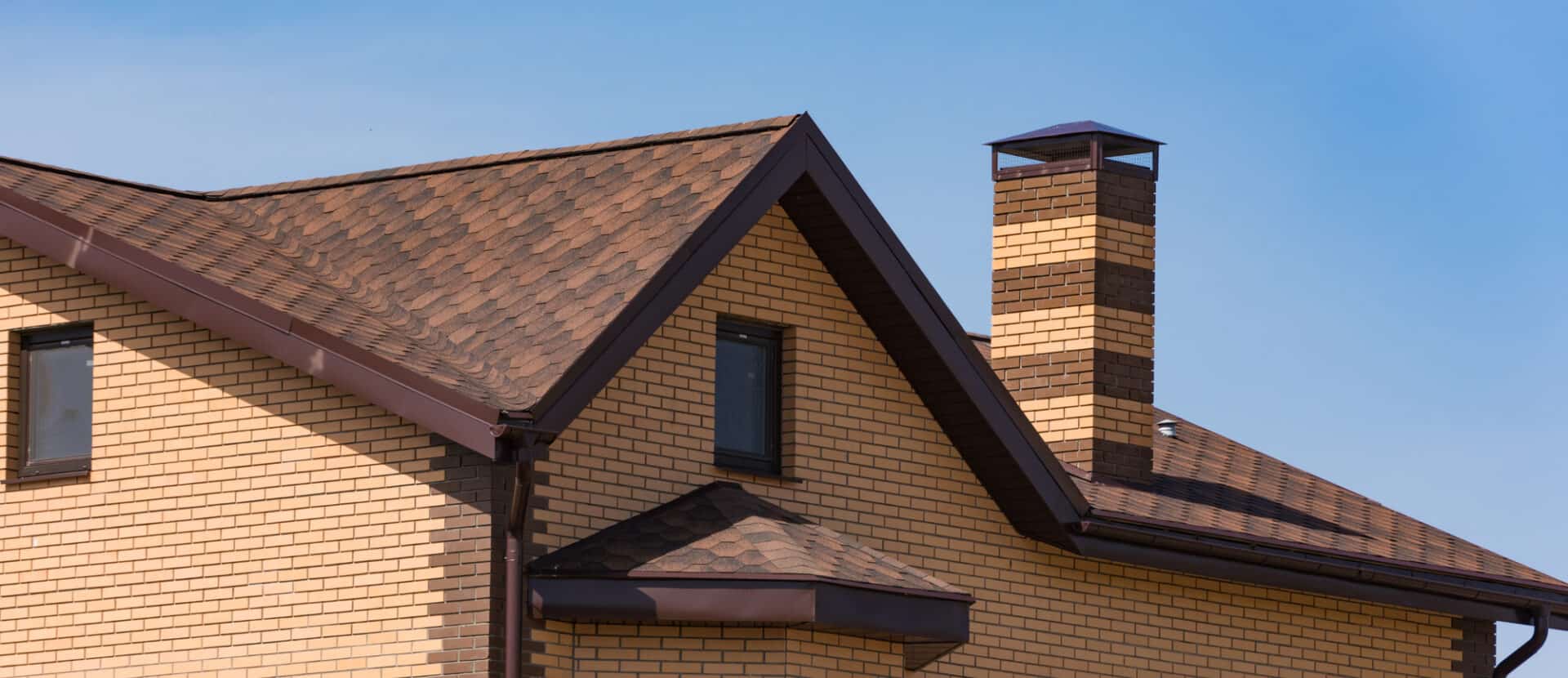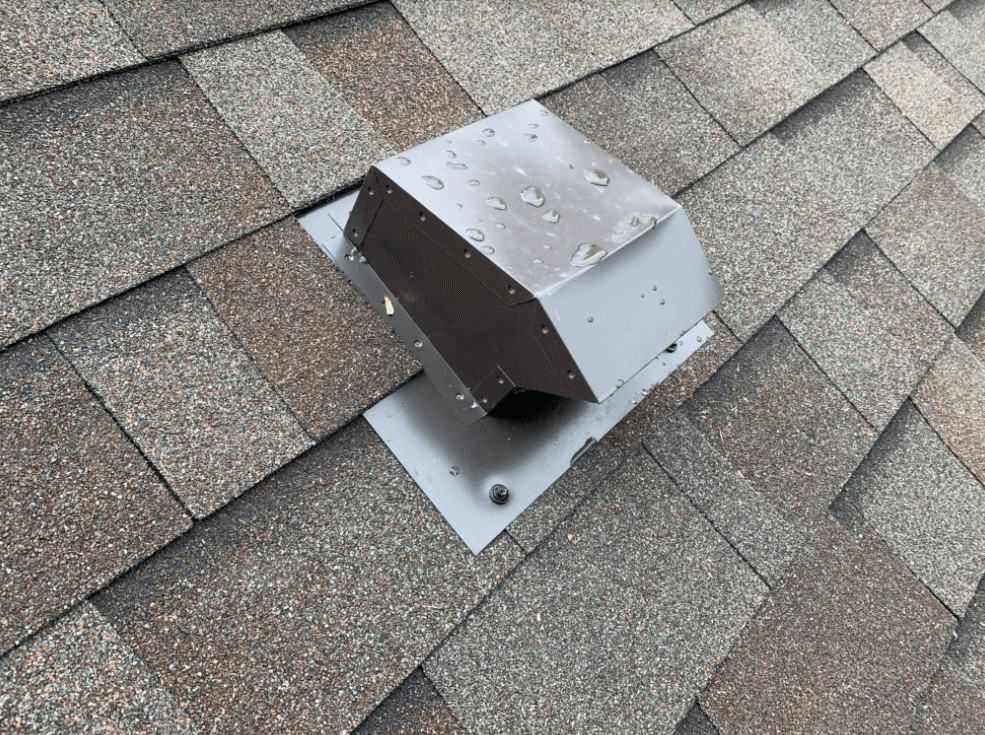Ventilation in your roof is extremely important. If you don’t have the right amount of vents, you will run into many problems down the road. These include black mold growing in your attic (which can cause health problems), making it more expensive to cool your home in the summer, and making your shingles wear out faster than they should.
When it comes to roof ventilation, you need to focus on two things: Intake vents and Exhaust vents. Basically, Intake vents draw fresh air into your attic, and exhaust vents allow the warm, moist air in your attic to escape. To learn more read our short guide about how roof ventilation works.
How Much Ventilation Does My Home Need?
To meet building code requirements, your home must have 1 square foot of Net Free Area (NFA) for every 300 square feet of attic space. This amount must be split between your intake and exhaust ventilation systems, to provide circulation of air throughout your attic. For example, if you have 2000 square feet in your attic, then you will need 6.66 sq. ft. of NFA split between the intake and exhaust. Most vents will have their NFA rating in inches, so if you multiply the 6.66 by 144 you’ll get the required square inches of NFA you need. In this case, you’d need 480 sq. in. for each system: intake and exhaust.
The best place for intake vents are down in the soffits of your home. Basically you want them as low as possible.
The best place for exhaust vents are at the highest possible point of your roof. This can be achieved with either cans (aka roof louvers) or ridgevent.
Best Roof Intake Ventilation System For Your Home
The best intake ventilation is one that meets code requirements and works. The biggest factor that will make your intake vents stop working is being stuffed with insulation. Many insulation installers don’t know the importance of ventilation for your roof, since they just focus on the insulation part. If they are careless and either (1) Don’t install baffles to prevent insulation from clogging your vents or (2) Install them and then fill them with insulation – your entire roof ventilation system will become almost worthless. The bottom line is…your intake vents MUST be clear if you want your attic space to properly ventilate.
Best Roof Exhaust Ventilation For a Home
The best exhaust ventilation system will at a minimum meet code requirements, and ideally double what’s required. Tests have been done that show a ventilation system that meets code requirements will lower the temperature of your attic by about 8 degrees (F). If you double what’s required for exhaust venting, the temperature of your attic space will be lowered by 20 degrees (F)!
When it comes to keeping your home cool in the summer, this makes a huge difference! Plus, the lower the temperature means the less moisture build up, and the longer your plywood and shingles will last because of it.
Plus it’s not that hard to double the code requirements for venting. Sure, you could install twice as many vents (which would be an eye sore) or you could just simply switch to a ridgevent. Ridgevent is an exhaust ventilation system that (on most houses) will double the effectiveness of your vents and help you substantially lower the temperature in your attic. The only case ridgevent isn’t head and shoulders above other ventilation types is on a completely hip roof, where there are no horizontal ridgelines.
For Ridgevent to work effectively and do it’s job, two things need to happen (if you’re switching over from roof louvers)
- All the existing vent holes must be covered up. These two types of ventilation will not work together to give you even more venting. In fact, they will work against each other and almost negate your ventilation all together. What happens is the existing roof louvers (if kept) will act as the new intake vents, and it will create a small circular vortex that only vents the top couple feet of your attic. All the air in the lower areas will not get pushed out and your intake vents in your soffits will be crippled.
- A 2″ strip at the top of your ridge must be cut and cleared before installation of your ridgevent. This gap at the very peak of your roof will help the maximum amount of air to escape through your roof and make your ventilation system as efficient as possible.
If you are having a professional come out and install a ridgevent on your home, first, be sure they use the best ridgevent available – one with an external baffle and some sort of “bug stop” to prevent pests from getting in. Second, you must BE SURE they are going to install the vent and ridgecap with minimum 2 1/2″ roofing nails. Note that these cannot be shot out of a gun, so it will have to be hand-nailed. If your installers just shoot your new venting on with 1 3/4″ nails (the largest that will come out of a gun), they will barely hit the plywood and your ridgevent will blow off if you get some severe wind.
Action Steps:
To make sure your roof won’t fail early and you’re not paying out the nose needlessly to cool your home this summer, make sure you’re ventilation system is up to snuff! Here’s some quick steps you can take to do a “self-check.”
- Get up in your attic and see if your intake vents are blocked.
- Calculate the amount of venting you need (in inches) using the square footage of your home’s floor plan. (home main level sq ft) / (300) x (144) / 2 = Sq In of NFA you need for EACH exhaust and intake.
- Go outside and count the number of vents on your roof. Multiply this number by 45 to get the approximate square inches of exhaust ventilation your home has.
- Find a comparable product to the type of intake vents you have and multiply those by the NFA of that product to get your intake ventilation amount.
- If you are lacking in any of these areas, get your ventilation upgraded, it will save you in the long run!
If you aren’t comfortable doing any of these items yourself, we would love to help! We offer a complete Leak Prevention Audit where we will check all your home’s roof systems to make sure you won’t have any problems down the road. Give us a call and we’ll get you in the schedule to make sure you aren’t wasting money this summer or wake up with a black mold problem.
If you’d like more information on the rest of your roof, read about the best roofing materials for your home here.
Call for a Quote
If you are in Post Falls or surrounding areas, reach out to New Heights today. We will give you a price to replace your roof.




